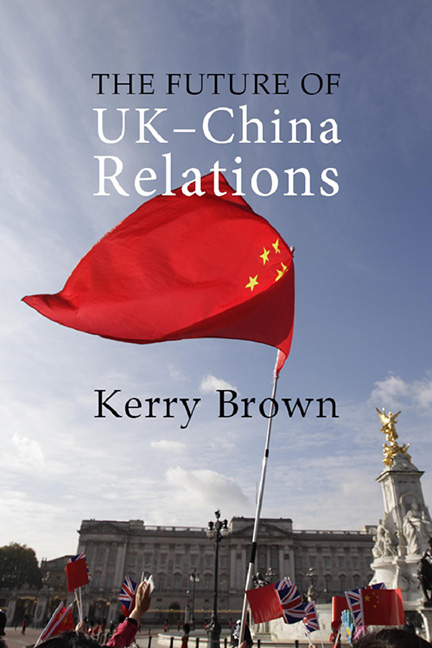Book contents
- Frontmatter
- Dedication
- Contents
- Dedication
- Preface
- Foreword by Tim Clissold
- Introduction
- 1 Tales from the golden age
- 2 What does China want? The case of the UK
- 3 Walk on by: what does Britain really want from China?
- 4 Who cares? The China circle in Britain
- 5 The good, the bad, and the Brexit: the UK and China outside the EU
- 6 The UK and China: scenarios for the coming decade
- Appendix: the UK’China balance sheet
- Further reading
- Notes
- Index
Appendix: the UK’China balance sheet
Published online by Cambridge University Press: 24 August 2023
- Frontmatter
- Dedication
- Contents
- Dedication
- Preface
- Foreword by Tim Clissold
- Introduction
- 1 Tales from the golden age
- 2 What does China want? The case of the UK
- 3 Walk on by: what does Britain really want from China?
- 4 Who cares? The China circle in Britain
- 5 The good, the bad, and the Brexit: the UK and China outside the EU
- 6 The UK and China: scenarios for the coming decade
- Appendix: the UK’China balance sheet
- Further reading
- Notes
- Index
Summary
According to the Office for National Statistics (ONS), China is not the UK’s largest trading partner, as is the case for many other countries in the world. In terms of UK imports, China ranks after the European Union and the United States. In terms of UK exports, China comes fourth after the EU, the United States and what is described as “Residual Gulf Arabian countries”. In 2017, in terms of overall flows of trade, China exported to the UK approximately twice what it imported. When services as a component of this are remoted, then the figure becomes more like 2.5 times. Compared to the amounts between the UK and the EU, however, China shrinks dramatically. In 2017, the UK exported £235 billion in goods and services to the other 27 member states of the Union, and imported £318 billion. The EU therefore accounts for about nine times the amount of the overall trade with the People’s Republic.
These figure, it will be noted, have risen, but not dramatically, and indeed between 2013 and 2016 remained static (rather than falling, which would have been the assumption of many in view of Sino–UK tensions over this era because of Cameron’s meeting with the Dalai Lama in 2012). In terms of services, too – the target of so much effort from the UK – the rises have been incremental, and in some years there have been relapses. Ironically, the figure for exports of services from the UK to China in 2013 was the same as four years later.
In terms of the composition of this trade, the main sectors from the UK to China were cars, crude oil, medicinal and pharmaceutical products, metal ores and scrap and miscellaneous goods. From China to the UK they were telecommunications, clothing, office machinery, and miscellaneous metal manufactures. These broadly fit the global pattern about China: hungry for raw materials, and able to produce and then export manufactured goods through cheaper labour and other costs.
Investment figures are always contentious, with Chinese, British, and UNCTAD (the UN body that collects data) figures often varying, often because of the different ways in which they define direct investment.
- Type
- Chapter
- Information
- The Future of UK-China RelationsThe Search for a New Model, pp. 113 - 116Publisher: Agenda PublishingPrint publication year: 2019

